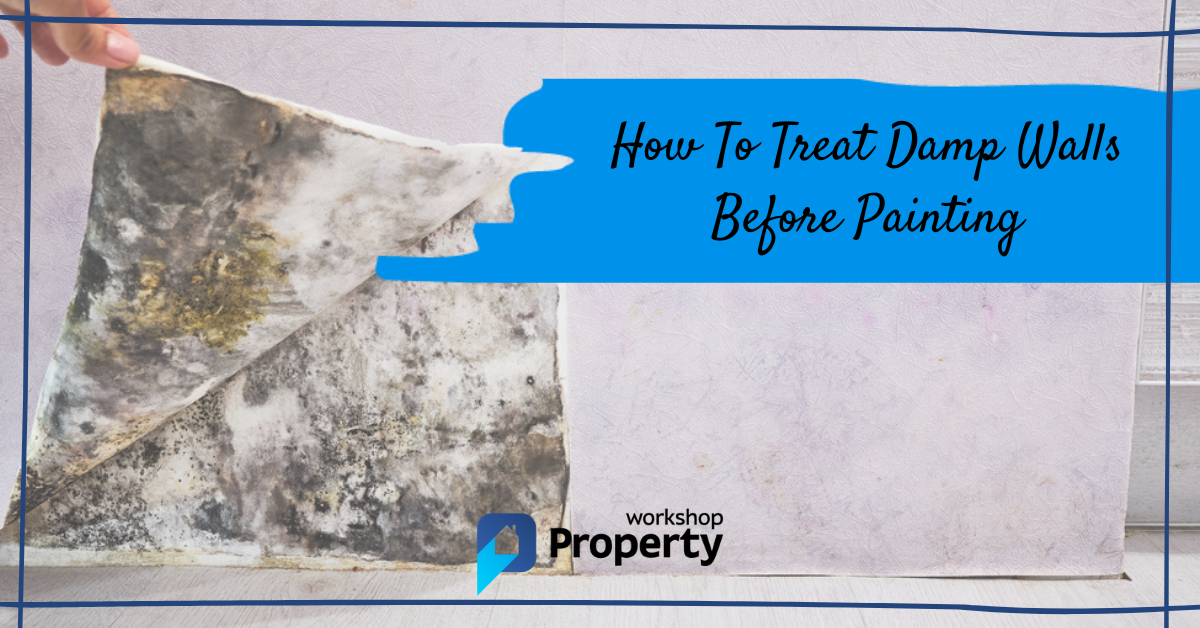With over 30 years of experience carrying out building surveys, I know damp when I see it, and it isn’t just the black spores of mould growth that give it away — it’s the pungent smell! In this guide, I’ll show you how to establish the source of your damp and how to treat damp walls before painting or redecorating.
Damp in the home is terrible for your health — you can even feel it in your bones after a while!
The signs of damp are not always obvious, as some homeowners try to cover mould with wallpaper. However, if you don’t fix the root cause, mould will always return, peeling off wallpaper and revealing the ugly black fungus beneath.
Why is Mould so Bad for You?
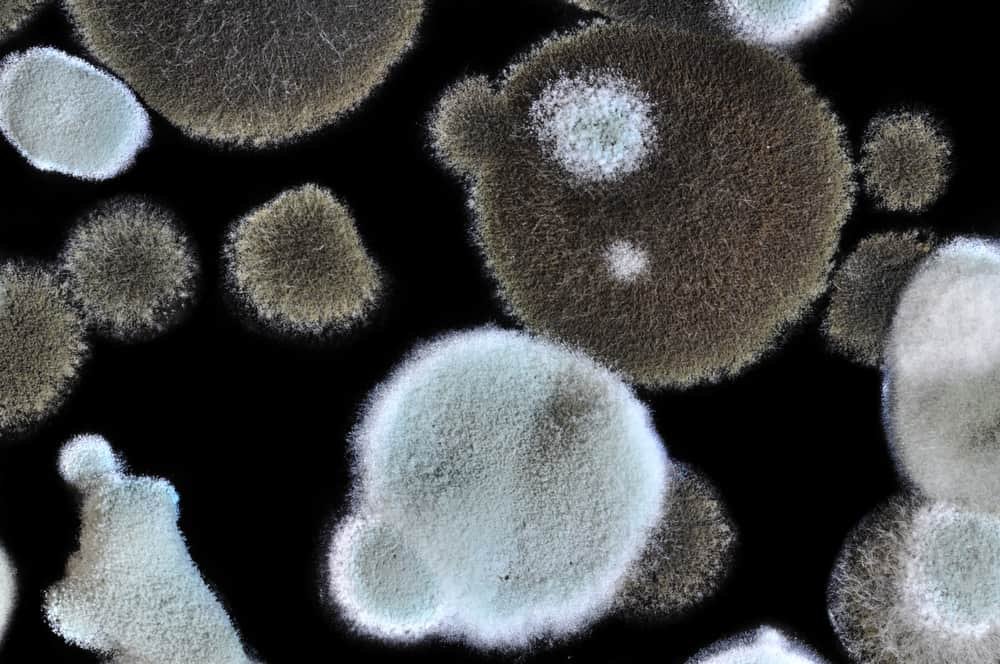
Not only is mould unsightly, but it’s also bad for your health. Mould is a fungus growing on surfaces such as walls and ceilings. Mould thrives in damp, humid conditions, which is why you find it mostly in bathrooms, laundry rooms and kitchens.
Mould gives off microscopic spores that can get into the atmosphere and spread throughout a room, which is why you often find patches away from the source.
Inhaling these spores can cause breathing problems such as asthma and nasal congestion. They can also cause allergic reactions similar to hay fever. Touching the mould can result in skin irritation and rashes, which can spread to your eyes if you rub them.
I often felt ill after completing my inspection — face masks weren’t as readily available in those days.
What Causes Mould to Grow?
Excess moisture causes damp, and damp leads to mould growth. Damp can come from inside or outside your home.
Internal Damp
Poor ventilation and bad habits lead to damp coming from inside your home. Internal damp is relatively easy to resolve by using extractor fans, opening windows and drying wet clothes outside or in a tumble dryer. In most cases, you can resolve internal damp without the help of professionals.
Condensation
Condensation is challenging to spot and test. I use a piece of equipment that takes the surface temperature of the wall and then compares it to the temperature inside the room.
I test for relative humidity (RH) and dew point (DP). When the RH is high, and the DP is close to the ambient temperature, condensation will appear on the surface.
Since then, I’ve found a much more accessible, if less scientific, method involving a piece of aluminium foil and some Sellotape.
How to Test for Condensation
- Dry off a section of the wall using a hairdryer.
- Tape a 200mm square piece of aluminium foil to the wall, ensuring you seal it all around, and then leave it for a day or two.
- Remove the foil. If there are droplets of moisture on the wall side, the moisture comes from penetration. If the droplets are on the room side, condensation is the cause.
External Damp
External moisture typically enters your home in one of three ways. If you have any of the three problems below, it’s best to seek professional help immediately.
- Rising Damp — moisture rising from the ground and up an exterior wall
- Penetrating Damp — moisture penetrating through exterior walls
- Leaky Roof
What is the Difference Between Rising Damp and Penetrating Damp?
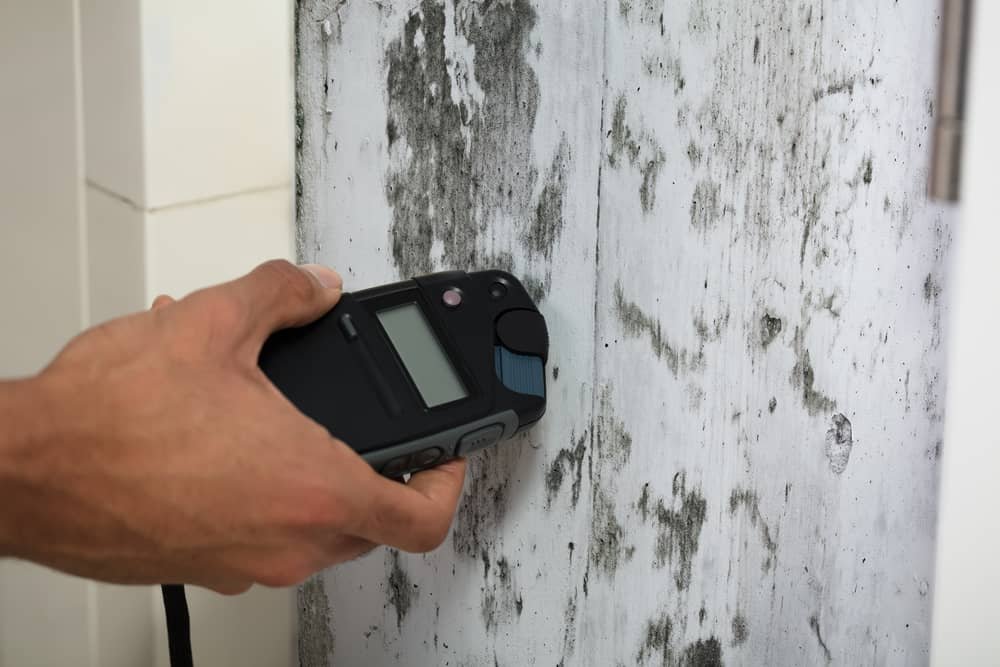
Rising damp occurs at lower levels on your wall. If you have a damp meter — and no home should be without one — test the wall just above the skirting, then work your way up, testing every 200mm. If you have rising damp, the reading should decrease as you go higher. Do this test at various points along your wall to gauge the extent of the problem.
1. Rising Damp
Rising damp indicates that your horizontal damp-proof course (DPC) has been bridged or may be non-existent. Check this by looking outside. The ground level should be around 150mm below the DPC. The DPC should be at or below the internal floor level. Often you will see black plastic DPC in more modern houses. In older homes, you may see bitumen-coated felt or hessian. In houses built before 1930, it may not be there at all.
You should test the walls around external doors and window frames as well. If you’re getting damp around the door jamb, there could be no DPC, or it has failed.
Pro Tip: Check out our Damp Proofing Cost Guide for more information on the causes, cures and cost of damp proofing a wall.
2. Penetrating Damp
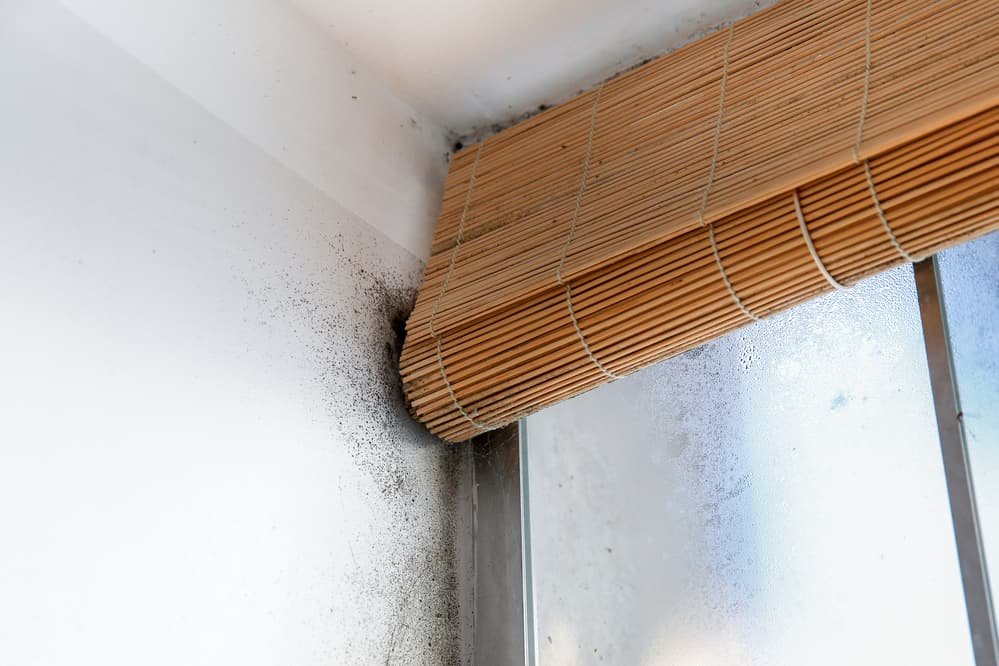
Older properties may have external cracks in their masonry or joints, which allow moisture to pass through.
Also, cavity walls often catch falling debris. This debris becomes lodged on the wall ties, creating a bridge for moisture to travel across and reach the inner leaf.
3. Leaky Roof
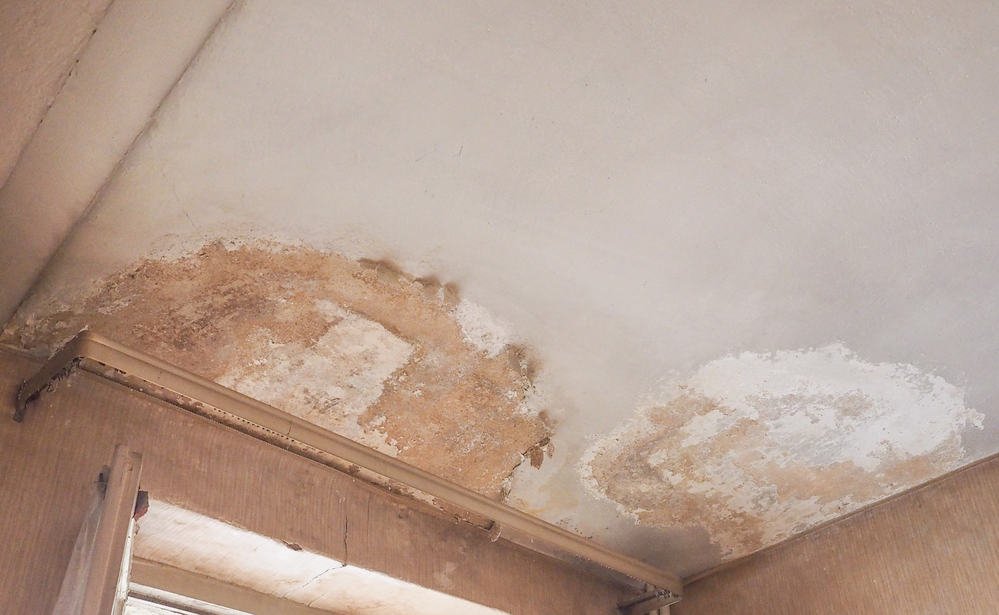
If you have damp around your ceiling, it’s most likely from faulty guttering, missing roof tiles, damage to a flat roof covering, ineffective flashings or even a leaking pipe in the loft.
If your home suffers from any of these issues, get professional help immediately to prevent further damage to the structure of your house.
How Do I Get Rid of Condensation?
Ventilation
Improve ventilation by installing a fan close to the moisture source, such as over a cooker or washing machine. The fan must be ducted to an outside wall so the moisture can leave the house.
Insulation
You should also consider adding insulation to the wall or loft. Insulation will reduce heat loss and keep the wall or ceiling surface above the dew point, thus preventing condensation. A combination of ventilation and insulation usually does the trick.
Take care when adding insulation above a ceiling. To meet modern standards, the loft space should have around 250mm of Rockwool or Fibreglass. If you add to what is already there, ensure you don’t block any ventilation slots at the eaves, as this could transfer your problem from one place to another.
Anti-condensation paint
Anti-condensation paint works by slightly insulating the painted surface. It won’t stop condensation from forming in extreme conditions, but it might help reduce the effects in rooms like kitchens and bathrooms.
Final Thoughts
Damp in the home is a huge problem, and understanding what causes it is the first step in confronting the issue.
If the damp comes from internal sources (e.g. condensation), you may be able to resolve the problem yourself. Otherwise, we highly recommend calling in the professionals. Either way, do NOT start decorating before resolving your damp issues.
If you want to learn more about mould and how to prevent it, read this article from the Centre for Sustainable Energy.
Pro Tip: Check out our painting and wallpapering cost guides once your walls are reading for decorating.

